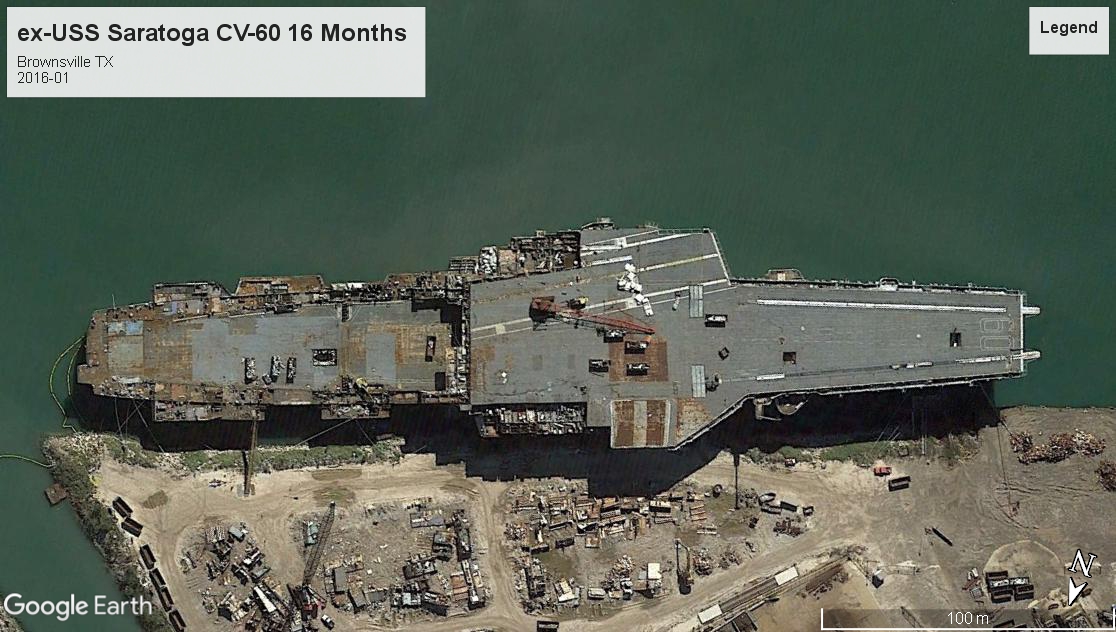Scrapping the largest warships in the World is a monumental undertaking. With the exception of ex-USS America, CV-66, which was sunk in deep water in 2005 to test carrier vulnerability to modern weapons, it now seems every other decommissioned supercarrier* will be dismantled. So how do you take apart a 1000-foot long, 80,000 ton behemoth?
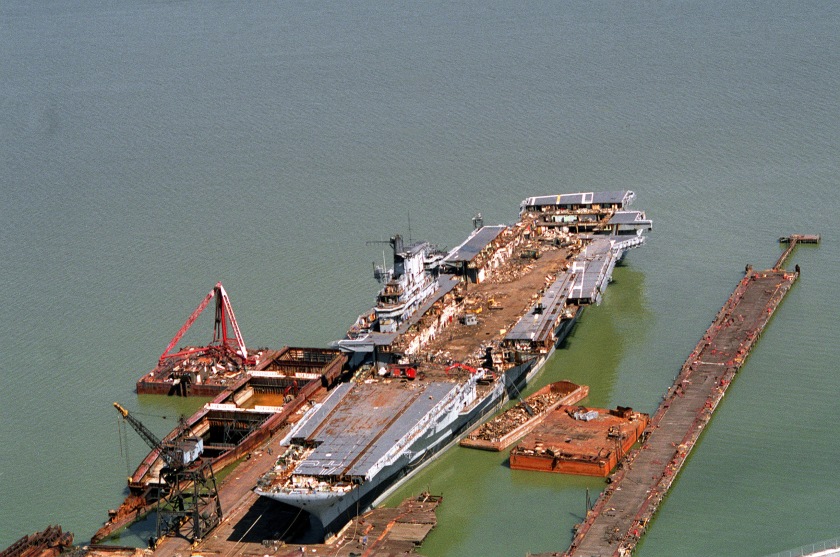

These behemoths were technologically advanced Cold Warriors. They were constructed over a period of years with massive outlays of resources, and pioneered many innovative technologies. They were objects of national prestige, and conveyed an image of invulnerability that set the USN apart from all competing powers, including the Soviet Union. They had busy careers, being continually retrofitted with upgrades to counter obsolescence and operate squadrons of new types of aircraft over four decades of deployments, from the Vietnam War to Desert Storm. More than 4,600 crew, including the air complement, served on each and every one of these deployments.
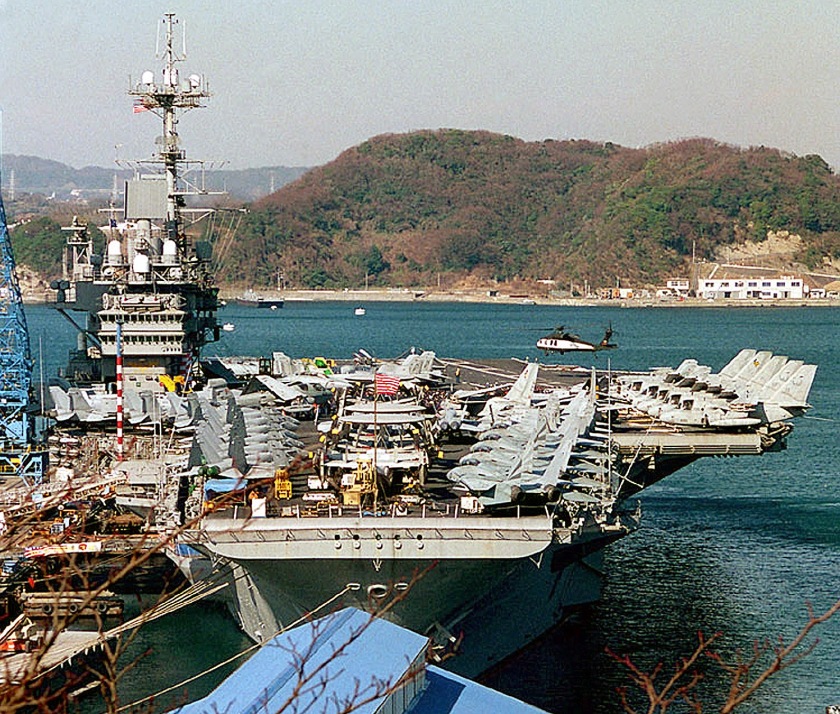
Each carrier eventually reached their scheduled retirement dates, and was taken out of service with great fanfare. What followed was 2 decades in reserve or inactivated status, on the off-chance that some dire need would force a reactivation. For views of these carriers intact, during their time in reserve, please visit the USN retired ships listing. Efforts to preserve these ships as museums or to convert them to some other purpose were unsuccessful, with the government eventually tendering bids for scrapping. A few last artifacts were removed, to be dispersed to museums with relevant collections and for other commemorative uses. For all retired USN carriers scrapped after 2000, the next step has involved a last sea voyage – the slow tow along the Gulf Coast. The ship breakers are located up a long protected channel near Brownsville. The carriers are positioned carefully in slips or moored next to other decommissioned USN ships, former commercial vessels, and also oil platforms that are all being cut apart. Unlike ship breakers in India or Turkey, there is no run up on the beach, and scrapping is a mechanized, planned effort, not performed by an army of underpaid workers.
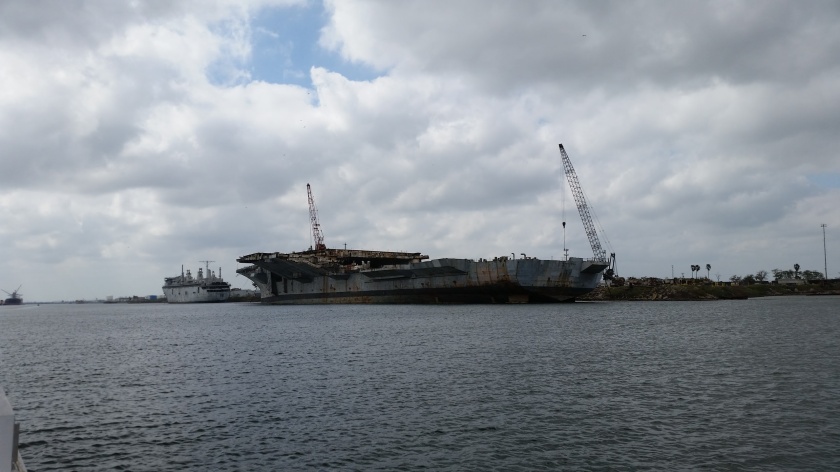
The ship breaking process is a reversal of the one that constructed these carriers. The ships are taken apart, still in the water, from island superstructure downwards, and from stern to bows. As scrapping progresses, hulks are periodically shuffled between berths to make way for new dismantling, or to position them for final disassembly in the slips angled inland. These slips reach out beyond the carrier’s 1,100-foot length. At this final stage, the remaining lower decks, bilges, and the keel is gradually hauled out of the water. Crews work their way aft, with the propeller shafts usually the last parts disassembled. After a dismantling that in some cases has lasted longer than the original construction, all that is left is sorting the metal, and sending it to Mexico in barges (the process is explained in more detail in the 25 July 2012 NPR report “When the Ship Comes in to Brownsville, Rip it Up“)
Carriers undergoing dismantling in Brownsville Texas:
ex-USS Forrestal CV-59 commissioned 1955 (37 years active service, 21 years in reserve/inactive) LOA 1,067′ TDISP 81,000 tons. Arrived at Brownsville TX mid-February 2014, and was completely dismantled by December 2015.
ex-USS Constellation CV-64 commissioned 1961 (41 years active service, 12 years in reserve/inactive) Kitty Hawk Class, LOA 1,069′ TDISP 82,000 tons. Arrived at Brownsville TX January 2015. Scrapping complete 10 may 2017. ex-USS Ranger CV-61 commissioned 1957 (35 years active service, 22 years reserve/inactive) Forrestal Class LOA 1,046′ TDISP 81,000 tons. arrived at Brownsville TX July 2015. Scrapping complete 1 November 2017. ex-USS Independence CV-62 commissioned 1959 (39 years active service, 18 years in reserve/inactive) Forrestal Class LOA 1,070′ TDISP 81,000 tons. Arrived at Brownsville TX 30 May 2017. Scrapping complete early 2019. ex-USS Saratoga CV-60 commissioned 1956 (37 years active service, 20 years in reserve/inactive) Forrestal Class LOA 1,063′ TDISP 81,000 tons. Arrived at Brownsville TX mid-September 2014. Dismantling stalled as ESCO Marine shut down operations. The new SteelCoast bought the assets and the hulk, and resumed work. The Dec. 2017 view is the last available, as the most recent captures skipped all the final stages of dismantlement. Scrapping completed 31 March 2019. Ex-USS Kitty Hawk CV-63 commissioned 1961 (48 years active service, 13 years in reserve/inactive) Kitty Hawk Class, LOA 1,069′ TDISP 82,000 tons. Arrived at Brownsville TX May 2022, only released view from June 2023.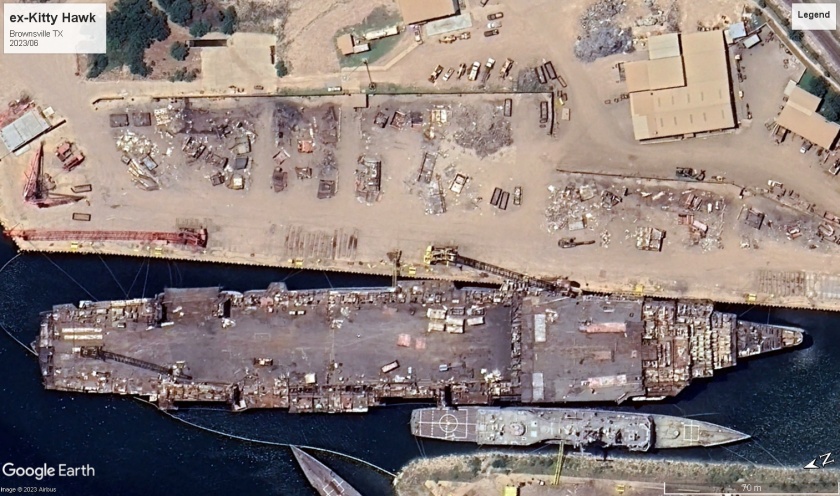
*On this page I define a “supercarrier” as an aircraft carrier of at least the displacement and air complement of the Forrestal Class carriers. There is no precise definition for the term. After numerous upgrades, the Midway class, such as the USS Coral Sea CV-43 (featured at top), approaches this definition.
**This is as of early 2020, and does not include amphibious assault ships, or carriers in reserve, or not yet in commissioned service, or those that no longer operate attack aircraft.
